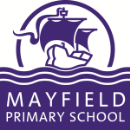Nothing sinks the heart like that tell-tale scratching of your child’s fingers through their  hair. Head lice are so common, especially with school age children, that you might as well accept the inevitable. Just make sure your approach to head lice treatment is thorough and effective.*
hair. Head lice are so common, especially with school age children, that you might as well accept the inevitable. Just make sure your approach to head lice treatment is thorough and effective.*
What are head lice?
Head lice are tiny, wingless insects that live exclusively on the human scalp feeding on blood. Adult lice lay eggs, known as nits, that once hatched take 6-10 days to become fully grown. Once mature, they can crawl from head to head.
Reassuringly, head lice cannot fly, jump or swim. They are spread by close contact which is why children are so susceptible.
How to spot head lice
Scratching will usually tip you off to their presence. It’s not particularly easy to see head lice so ‘detection combing’ is the best way to find them. You use a special fine-toothed head lice comb (with tooth spacing of less than 0.3mm to trap the smallest lice) to comb through the hair. It works better on wet hair but can be used on dry hair, too.
How to treat head lice
Wet combing
Wet combing is one of the most effective head lice treatments. It can be used without medicated lotions, but needs to be done regularly and can take a long time to do thoroughly.
- Wash the hair with ordinary shampoo. Use plenty of conditioner, (it won’t drown the lice but makes them easier to remove).
- Use a wide-toothed comb to detangle the hair.
- Once the comb moves freely, switch to the detection comb. Start at the front of the scalp and comb the hair from the roots to the very end.
- After each stroke, examine the teeth of the comb for lice. Remove lice by wiping or rinsing the comb.
- Work methodically through the hair, section by section, so that the whole head of hair is combed through.
- Rinse out the conditioner and repeat the combing procedure in the wet hair.
- Repeat the procedure on days five, nine and 13, so that you clear young lice as they hatch, before they have time to reach maturity.
Other head lice treatments
- You can use controlled, heated air to effectively dehydrate the lice and their eggs. Applying a blow dryer works well on eggs, but not as well on hatched lice.
- Insecticides that kill head lice are available in lotion form. You can buy them from the pharmacy or get them on prescription.
- The silicone-based ingredient Dimeticone (found in Hedrin, Hedrin Once and Nyda) kills lice and eggs by coating them and smothering them. Unlike insecticide treatment, head lice cannot develop resistance to them.
- Tea Tree Oil is one of the few natural ingredients that lab tests have shown to be effective. Other home remedies such as putting vinegar, isopropyl alcohol, olive oil, mayonnaise, or melted butter under a shower cap have been disproven.
Preventing head lice
It’s difficult to prevent a head lice infestation. Regular detection combing – for example, on a weekly basis, is the best way to find new lice quickly.
Keeping hair tied up is also useful. A pony tail which is then plaited helps to prevent loose hairs for lice to get hold of.
To prevent infections during ‘sleepovers’ at friends, give each child their own pillowcase and tell them to ‘top and tail’ (ie lie in bed with their heads at opposite ends).
* This information was taken from the Mumsnet website – for the full article please use this link: Mumsnet Head Lice Advice
